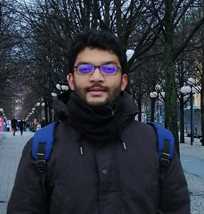Lic Thesis: Shaik Salman
Integrating Elastic Real-Time Applications on Fog Computing Platforms
| Student | Shaik Salman | |
|---|---|---|
| Advisors |
Thomas Nolte Alessandro V. Papadopoulos Saad Mubeen Filip Markovic |
|
| Faculty Reviewer | Risat Mahmud Pathan, Chalmers University of Technology, Gothenburg, Sweden | |
| Grading Committee |
Thidapat (Tam) Chantem, Virginia Tech, USA Marco Di Natale, Scuola Superiore Sant’Anna, Pisa, Italy Markus Bohlin, Mälardalen University, Sweden (reserve) |
|
| Defence | Mälardalen University, Västerås, Sweden Room Delta and Zoom meeting (Link will be made public) March 30th, 2022 14:00 |
|
| Abstract | Real-time systems such as industrial robots and autonomous navigation vehicles integrate a wide range of algorithms to achieve their functional behaviour. In certain systems, these algorithms are deployed on dedicated computational resources and exchange information over a real-time network. With the availability of modern multi-processors, there has been a growing interest in transitioning towards an integrated architecture where these algorithms can be executed on a shared computational resource. The technology enabling such transition is focused around the virtualization of the computational resources that can provide spatial isolation and temporal partitioning to these software applications. Although many useful solutions such as resource reservations and hierarchical scheduling have been proposed to facilitate virtualization for real-time applications, the current state-of-the-art addresses mostly those applications whose tasks can be specified according to the periodic or the sporadic task model. As the computational demand of many control algorithms can be adjusted flexibly at runtime, for example, by changing their periods, they can be better modeled using the elastic task model, thereby reducing the pessimism inherent with the periodic or the sporadic task model. Therefore, in this thesis, we first propose a scheduling framework for elastic real-time applications with reservations based on the periodic resource supply for uniprocessor systems and then extend this solution to a multiprocessor scenario where the reservation is based on the minimum parallelism supply form. Concurrently, since many existing software applications have been designed to run exclusively on dedicated single cores, we provide a systematic methodology to guide the migration of an existing real-time software application from a single-core to a multi-core platform with emphasis on architecture recovery of the existing software and its transformation for implementation on a multi-core platform. Furthermore, the advantages provided by cloud architectures for non-real-time applications has prompted discussions around the possibility of providing similar advantages to cyber physical systems such as industrial robots. Since virtualization is a key enabler for such architectures, we investigate the advantages of a fog-based architecture over an existing architecture of the robot controllers and identify key research challenges that need to be addressed for its successful implementation. |
|
| Rules and Guidelines |
The Lic procedure summary Rules for Third-cycle Studies at MDH - Chapter 3.1.7 Public Defence of a Thesis Instructions regarding public defences and licentiate seminars on account of the outbreak of Covid19 (Coronavirus) |
|
| Thesis | Thesis | |
| Included Papers |
Paper A: Scheduling Elastic Applications in Compositional Real-Time Systems . Paper B: Multi-Processor Scheduling of Elastic Applications in Com- positional Real-Time Systems . Paper C: A Systematic Methodology to Migrate Complex Real-time Software Systems to Multi-Core Platforms . Paper D: Fogification of Industrial Robotic Systems: Research Challenges . |
|
| Publications | Complete list of publications |
Last modified: 2023-10-04 09:44:45 +0200
